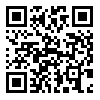مجله رویش روانشناسی از دادن گواهیهای کاغذی معذور است. لطفا تقاضا نکنید. همه گواهی ها در صفحه شخصی کاربران موجود است.
year 11, Issue 11 (winter 2023 2023)
Rooyesh 2023, 11(11): 63-72 |
Back to browse issues page
Download citation:
BibTeX | RIS | EndNote | Medlars | ProCite | Reference Manager | RefWorks
Send citation to:



BibTeX | RIS | EndNote | Medlars | ProCite | Reference Manager | RefWorks
Send citation to:
Darajati A A, Rezaee O. (2023). Predicting the Symptoms of Body Dysmorphic Disorder based on the amount of use of Social Networks and defense mechanisms in the Clients of Cosmetic Surgery Centers. Rooyesh. 11(11), 63-72.
URL: http://frooyesh.ir/article-1-4320-en.html
URL: http://frooyesh.ir/article-1-4320-en.html
1- Master's degree, clinical psychology, Azad University, Central Tehran Branch, Tehran, Iran. , abbasdarajati@gmail.com
2- Associate Professor, MD, Fellow Ship Of Psychosomatic Medicine, University Of Social Welfare And Rehabilitation Services, Tehran, Iran.
2- Associate Professor, MD, Fellow Ship Of Psychosomatic Medicine, University Of Social Welfare And Rehabilitation Services, Tehran, Iran.
Abstract: (2252 Views)
The purpose of the present study was to Predict the Symptoms of Body Dysmorphic Disorder based on the amount of use of Social Networks and defense mechanisms in the Clients of Cosmetic Surgery Centers. The research was done by the descriptive-correlation method. The statistical population of the research included those who were referred to cosmetic surgery centers in Tehran in 2021-2022. From this society, 120 people were selected as the research sample by cluster sampling. The research tools included Stozin et al.'s (1998) deformity concern questionnaire (DCQ), Karimian et al.'s social networking questionnaire (2018), and Andrews et al.'s (1993) defensive style questionnaire (DSQ). Pearson's correlation test and multiple regression test were used for data analysis. The results showed that the use of social networks (P = 0.02 and β = 0.22) and two defense styles: immature (P = 0.05 and β = 0.21) and neurotic (0.01) P and β=0.29) are predictors of body deformity, but the mature style was not a significant predictor for body deformity (P=0.54 and β=0.06). Also, the predictor variables of the research were able to predict 7% of the variance of the criterion variable in clients to cosmetic surgery centers. The result of the present study shows that paying attention to defense mechanisms and the use of virtual social networks by psychologists can help to explain body dysmorphic in those who refer to cosmetic surgery centers.
Type of Article: Research |
Subject:
Clinical Psychology
Received: 2022/12/27 | Accepted: 2023/01/15 | ePublished: 2023/04/3
Received: 2022/12/27 | Accepted: 2023/01/15 | ePublished: 2023/04/3
Send email to the article author
| Rights and permissions | |
 |
This work is licensed under a Creative Commons Attribution-NonCommercial 4.0 International License. |







